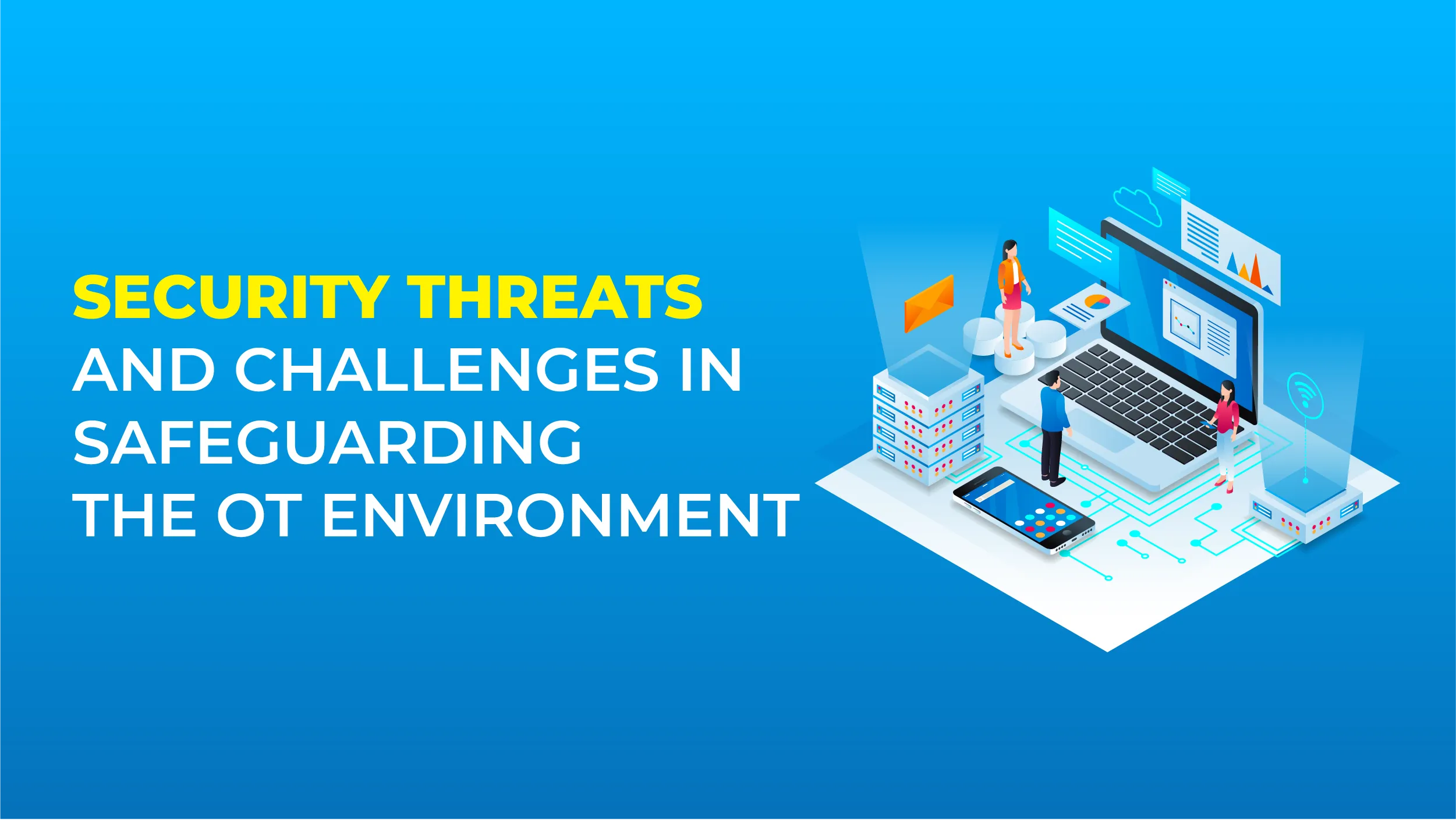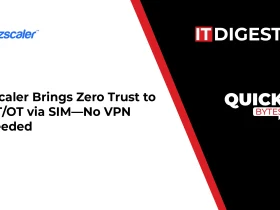Operational technology (OT) plays a significant role in various industries, from healthcare to transportation to energy to manufacturing. These technologies are leveraged to manage and track critical business infrastructure such as medical devices, transportation networks, oil rigs, and power plants. The dependence on OT systems is increasing at a rapid scale. Hence, it has become crucial to safeguard these systems from sophisticated cybersecurity threats. Malicious actors are targeting OT environments which can cripple business operations by resulting in equipment failures, production downtime, and safety incidents.
This blog explores the importance of cybersecurity in safeguarding the OT ecosystems to improve the security posture.
What is Operational Technology Cybersecurity?
Operational Technology (OT) cybersecurity plays a crucial role in safeguarding the production uptime and security of the industrial IT and critical OT infrastructure. Businesses in the manufacturing, energy, mining, chemical, food and beverage, petrochemical, and other industries should prioritize OT cybersecurity to protect their operating technology assets, processes, and systems from severe cyber attacks and ensure compliance with stringent regulatory requirements.
The attack surface areas of OT environments have grown significantly because of the connectedness of OT infrastructure, IT-OT convergence, and the increase in cyber-physical systems. The continuation of industrial processes plays a crucial role in business continuity. A compromise on critical infrastructure can result in the theft of value of trade secrets and has a tremendous impact on public safety. Hence, cybercriminals are on the prowl to compromise critical infrastructure as they are lucrative targets to accomplish their financial goals, cyberwarfare operations, or espionage.
Also Read: Revealing Penetration Testing: Definitions, Benefits, and Types
Security Threats and Challenges in Safeguarding the OT Environment
 Following is a list of a few security threats and challenges while securing the critical OT infrastructure:
Following is a list of a few security threats and challenges while securing the critical OT infrastructure:
● Malware Intrusions
Attacks involving malware are among the most recognized threats to operational technology and industrial environments. Contaminated external devices like USB drives and compromised IoT systems can disrupt daily operations by erasing critical data or causing system failures.
● Human Mistakes
This is another frequent issue for industrial sectors, often stemming from gaps in expertise among system operators. These errors are difficult to predict and nearly impossible to fully prevent. However, organizations can reduce the likelihood of human errors through targeted employee training and education.
● IoT Botnets and DDoS Attacks
Distributed Denial of Service (DDoS) assaults aim to overwhelm a website’s server, network, or application with artificial traffic, disrupting normal operations. Many industries use IoT devices and sensors for automation and remote tasks, but vulnerabilities in these systems can allow attackers to turn them into parts of botnets. These networks of compromised devices are then exploited to carry out DDoS attacks.
The Importance of Operational Technology Cybersecurity
Industrials and enterprise IT infrastructure are exposed to various risks. Hence, it is crucial to embrace a secure framework to safeguard sensitive data. OT cybersecurity can be an ideal strategy to improve the enterprise security:
● Ensure Continuity of Operations
Vast industries usually have a massive inventory, time-bound delivery pressure, complex client needs, and incorporate various stakeholders. These enterprises cannot afford any disruption. Even the smallest disruption in the operational environment can result in huge financial losses. It can also have a significant impact on client relationships because of the lack of robust security infrastructure. The adoption of operational technology cybersecurity assists organizations to ensure smooth and uninterrupted operations.
● Safeguard Industrial Systems from Cyber Attacks
Organizations that have third-party software, IoT systems, and sensors integrated into their business network have an expanded attack surface area. Cyberattacks on these critical industrial operations can result in financial losses. Operational Technology cybersecurity safeguards systems by integrating a wide array of solutions, including firewalls, intrusion detection systems (IDS), anti-malware programs, and intrusion prevention systems (IPS). These measures provide an additional layer of defense for the infrastructure. OT security also involves asset management, patch management, and vulnerability assessments to protect industrial systems from cyber threats.
● Protection From Data Breaches and Privacy Violations
In response to the growing number of security incidents, OT cybersecurity ensures secure access, conducts access privilege audits, and implements encrypted data backups to enhance overall security. Additionally, OT security employs policy-driven strategies to maintain data privacy, preventing the misuse of industrial client information.
3 Best Practises to Enhance Operational Technology Cybersecurity
 In order to have smooth OT operations, it is crucial to focus on enhancing cybersecurity. The following are the best practices to secure the critical OT infrastructure:
In order to have smooth OT operations, it is crucial to focus on enhancing cybersecurity. The following are the best practices to secure the critical OT infrastructure:
● Asset Discovery
OT networks and infrastructure can be highly complex, often providing limited visibility into the various resources within the OT environment. To effectively secure these systems, security professionals need comprehensive visibility across the entire infrastructure. The first step in securing OT systems is identifying all connected devices, topologies, and associated security standards.
● Network Segmentation and Isolation
Ensuring the security of operational technology systems requires dividing the network into segments, allowing security teams to easily audit and monitor each section. Best practices for network security include implementing the least-privilege rule, adopting a zero-trust approach, grouping similar network resources, and restricting third-party access.
● Threat Prevention
OT security strategies should prioritize detection and prevention. This involves deploying tools focused on threat prevention, implementing systems that reduce false-positive alerts, and leveraging modern machine learning-based behavioral detection and prevention technologies.
Wrapping it Up
It has become paramount for all organizations to secure their operation technology environments by taking proactive measures to safeguard the systems against sophisticated cyber threats. By focusing on value-driven strategies for operational technology cybersecurity like predictive maintenance, real-time tracking and analytics, asset management, and risk management, businesses can focus on enhancing their OT operations, minimizing costs, and improving overall performance.


































